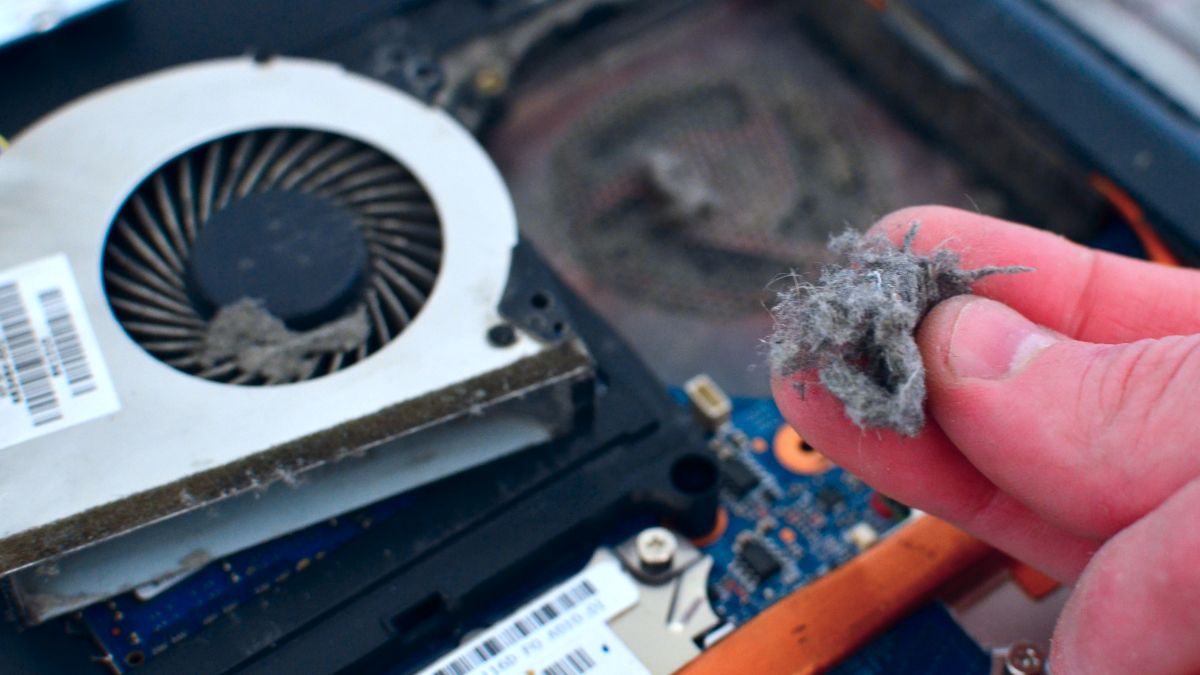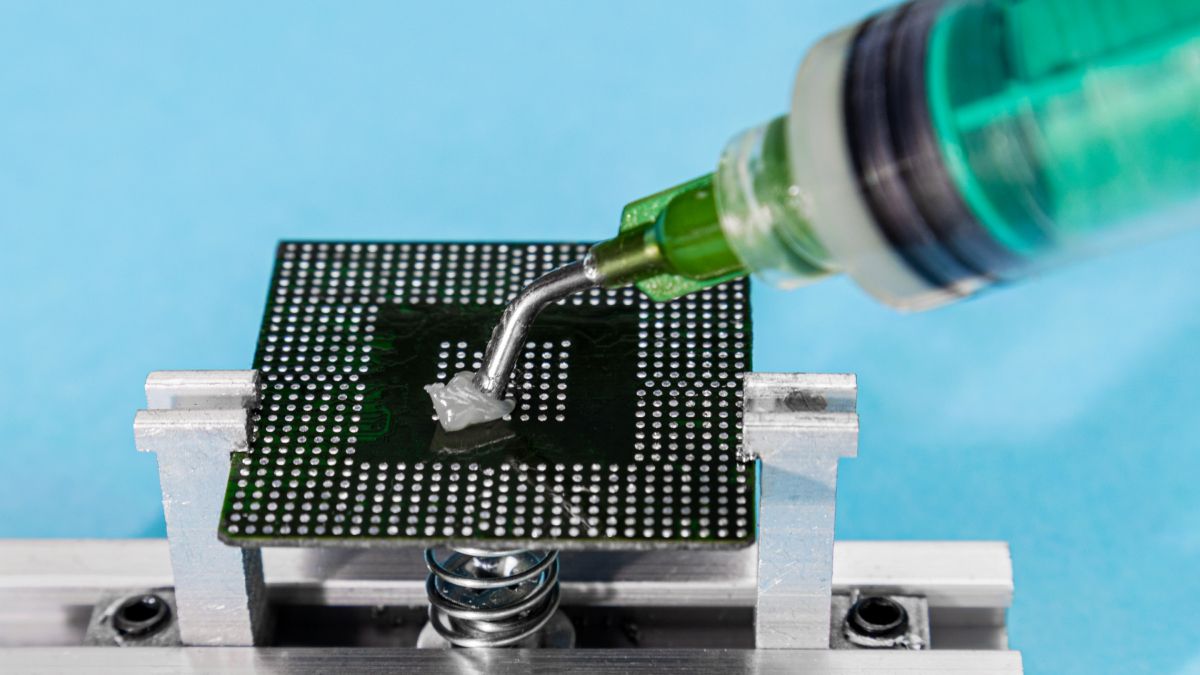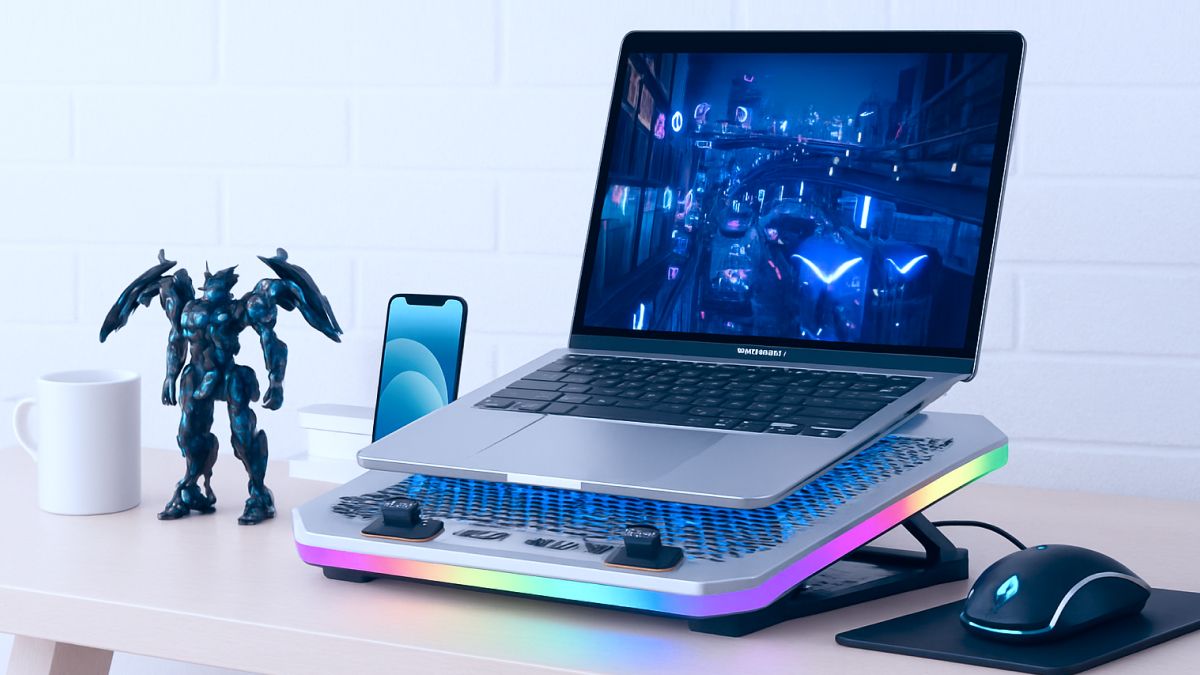
Error

Error

Error

Subscribed

The request was successfully sent

Error

Message sent

Error

There is "Maxnet" coverage at Your address

The request was successfully sent

No coverage

Error

Feedback sent successfully

Error

Feedback sent successfully

Error

Request sent successfully

Error

CV sent successfully

The request for the domain transfer is successfully sent

Error
30.07.2025
Internet
2025
Computer overheating is one of the biggest threats to its stable operation and longevity. High temperatures affect not only processors and graphics cards, but also other important system components. Given the relevance of this issue during the hot summer months, we decided to share some tips on how to reduce the temperature of your computer and laptop in hot weather to keep your devices running smoothly and extend their service life.
Signs of computer overheating
If you have a laptop, it is usually easier to detect the first signs that it is overheating: you can feel the heat directly on the surface where the device is located, and also notice that it is excessively loud during operation. With a computer, it is a little more complicated: due to the large size of the case, the heat is distributed more evenly, and the noise from overheating may be less noticeable because the fans are better adapted to the large amount of heat.
How can you tell in time that your PC's cooling system has failed? The most common signs include:
If the fan is constantly running at high speed (even when not under heavy load) and doesn’t stop, this may mean that the cooling system is unable to cope with high temperatures.
The system may be «slowing down» because the processor or video card is automatically reducing its frequency to protect against overheating. In this case, performance will drop, and you may notice FPS drops or long loading times in games or resource-intensive programs.
If your computer has started to shut down, restart or display blue screens spontaneously, this may indicate that its internal components have reached critical temperatures.
If you don’t pay attention to these situations in time, you risk encountering even more serious problems in the future due to the device overheating.
To check if your PC is «burning out» from the inside, you can use the built-in BIOS/UEFI tools or specialised programs for monitoring the temperature of the main components (e.g. AIDA64, CoreTemp, HWMonitor, Speccy, HWiNFO, CrystalDiskInfo). If the temperature readings for the processor and video card exceed 80°C, and those for the hard drive and motherboard exceed 50-55°C, this is already dangerous.
How to help cool your PC: practical tips
In fact, it is not difficult to ensure effective cooling of your computer. These simple recommendations will help you:
At first glance, this advice may seem obvious. However, many users ignore it, placing their computers in a corner of the room or in a cabinet, thus depriving the device of the opportunity to «breathe». It is important to understand that for normal air circulation, a PC must have sufficient space on all sides. Therefore, to ensure free air access, it is best to place the computer away from walls and other objects.
Dust that accumulates on fans and radiators significantly reduces the cooling efficiency of your computer. To prevent your PC from turning into a dust bomb, don't forget to clean not only your home but also the cooling system of your device regularly (every 2-3 months). To clean dust and dirt, use a special air canister or a vacuum cleaner with a soft nozzle. Believe me, your computer will thank you for it — not only will it last longer, but it will also run much quieter.
The more air there is, the less chance your computer has of overheating. Therefore, be sure to provide good ventilation. If the standard fans that cool the computer are not enough, add a few more or organise an additional cooling system. This will help lower the temperature inside the device, and it will run like clockwork even during heavy tasks. You will learn more about the existing cooling options below.
Updated software not only provides new features, but also offers the opportunity to resolve cooling issues. Manufacturers continuously release patches to optimize resource usage. Therefore, don’t overlook these important updates, and your computer will not only run faster, but also cool more efficiently.
Why does my laptop overheat and how can I prevent it?
Not only PC owners, but also laptop owners face the problem of overheating and slow performance. The reasons why your laptop turns into a «hot pan» can be:
Getting inside the case through the cooling vents, it settles and accumulates on the coolers, complicating their work. Neighbouring components also heat up, creating uncomfortable conditions for the entire system to operate.

Ventilation is the «heart» of cooling. And when it doesn't work, the device starts to overheat. This situation is dangerous because there is a risk of components burning out. Therefore, this problem must be solved as soon as possible.
This material ensures effective heat transfer between the processor and its cooling element (cooler or radiator). When the thermal paste dries out, it leads to overheating and even damage to the laptop's components.
When running resource-intensive programmes or performing intensive operations (video rendering, graphics processing, using «heavy» applications), the main components of the laptop begin to operate at maximum or near-maximum capacity. This significantly increases heat dissipation, which can lead to overheating if the laptop's cooling system cannot cope with such a load.
If you work in a poorly ventilated room, especially in summer, this can also cause your laptop to overheat.
Some laptop models shut down to prevent overheating, but not all. Therefore, it is worth being careful and following these tips on how to care for your laptop:
To keep your laptop running smoothly and prevent it from overheating, you should do a «general cleaning» every 9-12 months. To do this, turn off the device and remove the cover. A brush or vacuum cleaner with soft attachments for computer equipment will help you clean dust from hard-to-reach places.
An old, dried-out layer of material can’t only reduce the cooling efficiency of your laptop, but also increase the temperature by 10-15°C or even more. Updating the thermal paste is like «recharging» your laptop: the temperature drops, the cooling system works better, and you no longer get annoyed by the unstable performance of an overheated device.

Viruses can be compared to uninvited guests who constantly overload your system, forcing the processor to run at full speed. This not only reduces performance, but also significantly increases the temperature of your laptop. But once you get rid of these malicious guests, the load on the processor will decrease, and your system will breathe freely again, reducing the risk of overheating.
Direct sunlight can cause your laptop to overheat. To prevent this, move it to a cooler place. If the room has air conditioning or a fan, this will really help: the ambient temperature will lower the temperature of the device. And, of course, don’t leave your laptop in the sun for long periods of time. Direct sunlight can even deform plastic components.
Be sure to place your laptop on a hard surface (ideally a table) instead of soft materials (sofa, bed) so that the ventilation holes work more efficiently. Also, use a cooling pad — a special device (often with built-in fans) that raises and cools your laptop.

If you notice that your laptop is overheating, don't delay in finding the cause and fixing it. Otherwise, overheating will damage the device's components and cause it to fail.
Active cooling: overview of options
One of the most common methods of maintaining normal operating temperatures for components is active cooling. This involves the use of moving parts to remove heat from computer components. A wide range of options is available to optimise cooling for your specific needs.
Air cooling
If you look at the system unit, you will see ventilation holes on its front, rear and side panels. These allow air to enter and exit, which helps to reduce the temperature of the PC components.
However, effective ventilation inside the computer is impossible without properly functioning fans. They ensure constant air circulation inside the computer case, which helps prevent the processor, video card and hard drive from overheating.
Advantages:
Disadvantages:
Air cooling is the most common option for PCs. It is suitable for budget office computers, as well as entry-level and mid-range gaming PCs. However, under high loads, fans demonstrate lower efficiency.
Liquid (water) cooling
In this case, a special liquid (usually water) circulates through the cooling system, helping to dissipate heat from the components. This method is more effective than using fans, especially at high temperatures. Therefore, liquid cooling is suitable for high-performance computer systems where stable operation and noise reduction are important (for example, for gamers or professionals who work with large amounts of data).
Advantages:
Disadvantages:
Water cooling can be recommended to owners of high-performance computers, as well as those who value near-silent operation and maximum temperature reduction.
Thermoelectric cooling
This method is also known as Peltier cooling, which uses plates with piezoelectric materials to transfer heat from one side to the other. Thermoelectric cooling is less efficient than the previous methods due to the limited heat transfer of thermoelectric elements.
Advantages:
Disadvantages:
Thermal electric cooling is typically used in cases where precise temperature control of systems is required (e.g., for high-performance PCs). However, due to the significant energy consumption required, this type of cooling leads to increased energy consumption.
Passive cooling
This method involves the use of compact heat pipes or radiators to dissipate heat from the processor and other computer components. Passive cooling is less effective than active cooling and is mainly used in cases where space is limited or noise reduction is important.
Advantages:
Disadvantages:
This method is not suitable for cooling computers with powerful processors or graphics cards, but it will be useful in the energy-saving PC segment.
In general, when choosing between active and passive cooling, consider the conditions in which your computer is located and the requirements for it. If the device is located in a closed space without sufficient access to fresh air, it is better to opt for a solution with additional fans or water cooling for the PC. In cases where you use your computer for gaming or heavy tasks, this requires more powerful cooling.
How to choose the most effective way to cool your computer
Cooling efficiency largely depends on choosing the optimal option that will ensure proper conditions for your computer to operate. Here are some important factors to consider:
This parameter determines the cooling system installation options. A compact case is better suited for installing a small fan or a compact cooler in a computer. A large case has more space for installing powerful components (a sufficient number of fans, liquid cooling systems, large radiators).
The more powerful your device is, the greater the need for effective cooling. To ensure optimal temperature, you may need fans with a large air volume and radiators with a multi-layer design.
To avoid disturbing work in a quiet environment or office space, it is important to ensure adequate cooling without exceeding noise levels.
Each computer has its own unique characteristics (type of integrated graphics, number of processors, amount of RAM, etc.) that determine its performance and influence the choice of the optimal method of protection against overheating. For example, air cooling may be sufficient for normal use. If your computer has a powerful processor, a water cooling system is a more appropriate option. For specialised requirements, a thermoelectric method is more suitable.
The cost of the cooling system is also an important criterion when choosing. To find what suits you at an affordable price, it is worth comparing different options.
Remember: maintaining the optimal temperature is not only about the comfortable operation of your computer or laptop, but also about the longevity of the hardware. Every step is important here: from simple tips such as regular dusting and replacing thermal paste to more complex solutions such as changing the location or installing additional fans. So don't ignore these important aspects — and your device will run faster, more stable and without unnecessary noise.
Rate
5.0
Share
Comments
0
Еще комментарии